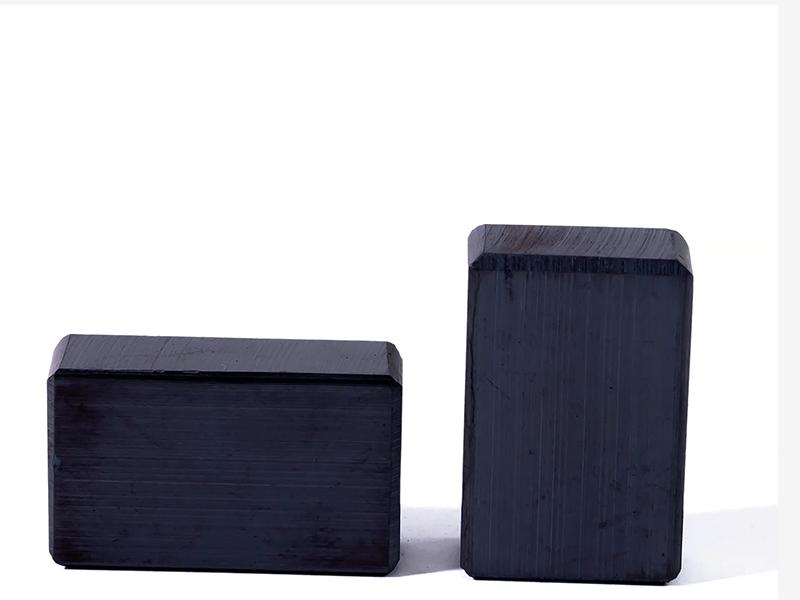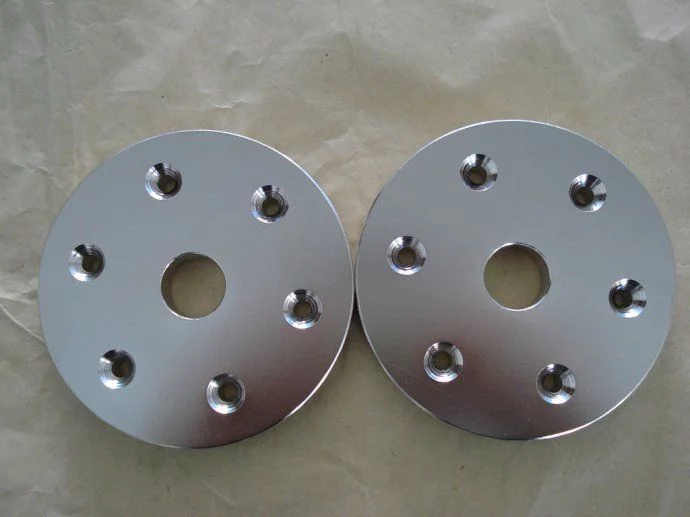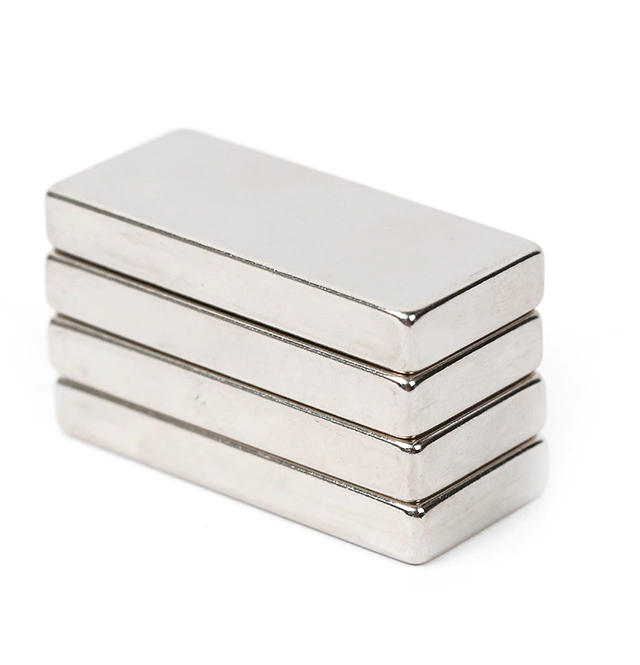What is coercive force (bHc) and what is intrinsic coercive force (jHc)?
On the demagnetization curve of permanent magnetic material, when the reverse magnetic field H increases to a certain value bHc, the magnetic induction intensity B of the magnet is 0, and the reverse magnetic field H value is the coerutive bHc of the material.
When the reverse magnetic field H= bHc, the magnet does not show magnetic flux externally, so coercivity bHc represents the ability of permanent magnet to resist the external reverse magnetic field or other demagnetization effect.
Coercivity bHc is one of the important parameters in magnetic circuit design.


It is worth noting that coerced bHc is always less numerically than remanent Jr.
As can be seen from Formula (1-1), at H= bHc, B=0, then 0bHc =J. It has been shown above that the magnetic polarization intensity value at any point on the J demagnetization curve is always smaller than the remanent Jr, so the forced bHc value is always smaller than the remanent Jr.
For example, the bHc of a Jr = 12.3kGS magnet cannot be greater than 12.3KOE.
In other words, remanence Jr is numerically the theoretical limit of coerced bHc.When the reverse magnetic field H= bHc, although the magnetic induction intensity B of the magnet is 0 and the magnet does not display the magnetic flux externally, the vector sum of the microscopic magnetic dipole moment inside the magnet is often not 0, which means that the magnetic polarization intensity J of the magnet usually remains a large value in the original direction.
Therefore, bHc is not enough to characterize the intrinsic magnetic properties of the magnet.
When the reverse magnetic field H increases to a certain value jHc, the vector sum of the microscopic magnetic dipole moment inside the magnet is 0, and the reverse magnetic field H value is said to be the intrinsic coercivity jHc of the material.
The intrinsic coercive force of ndfeb magnet jHc is permanent magnetic material is a very important physical parameter, for jHc far outweigh bHc magnet, when the reverse magnetic field H is greater than the bHc but less than jHc, although the magnet has been demagnetization to reverse the extent of the magnetic induction intensity B, but after the removal of reverse magnetic field H, magnets, magnetic induction intensity B can still because of the internal microscopic magnetic dipole moment vector and in the original direction and return to the original direction.
In other words, as long as the reverse magnetic field H has not reached jHc, the permanent magnetic material has not been completely demagnetized.
Therefore, intrinsic coercive FORCE jHc is a major index to characterize the ability of permanent magnetic materials to resist external reverse magnetic field or other demagnetization effects to maintain their original magnetization state.The units of coercivity bHc and intrinsic coercivity jHc are the same as the magnetic field strength units.General performance of magnetic materials can be represented by the four parameters, namely the residual magnetic induction intensity (hereinafter referred to as residual magnetism) Br (unit Gs or fine long hair gauss (mT), 1 mT = 10 Gs), coercive force Hcb oster Oe (unit), the intrinsic coercive force Hcj oster Oe (unit), the maximum magnetic energy product (BH) Max (unit mega high Mr MGOe), Br, Hcj, three parameters (BH) Max is the most direct means.
Br, Hcj, (BH) Max of NdFeb magnet
The size of Br can generally be considered to indicate the height of the surface magnetic field after magnetizing. The size of Hcj can explain the demagnetization resistance and temperature resistance of magnetic parts after magnetization.
(BH) Max is the maximum value of the product of Br and Hcj, and its size directly indicates the performance of the magnet. At present, we have not detected the binding of NdFeB(BH) Max to magnets greater than 11.5.
Generally speaking, Br is high and Hcj is low among magnets with similar (BH) Max.
If Hcj is high, Br is low. We can not only determine the quality of the product by (BH) Max, but also by whether the Br and Hcj are suitable for the product we need.
Whether the size of the three indicates the quality of the material
We should not determine the quality of Br, Hcj, (BH) Max according to its use and required characteristics.Even under the same (BH) Max value, high Br value, low Hcj value or vice versa depends on the product's use and magnetization requirements.
The effects of the three sizes on magnetization
As is known to all, under the same conditions, namely the same size, the same number of poles and the same magnetization voltage, the magnetization table of magnetic parts with high magnetic energy product is also high. However, at the same (BH) Max value, the height of Br and Hcj has the following effects on the magnetization: Br high, Hcj low: under the same magnetizing voltage, a higher surface magnetism can be obtained; Br low, Hcj high: A higher magnetizing voltage is required to obtain the same surface magnetism; For multipole magnetization, Br high Hcj low magnetic powder is used, while for magnetic tile, Hcj high Br is generally used.

What are the properties and processing technology of Ndfeb magnet?
The ndFeb magnetic material is an alloy of neodymium, iron oxide, etc.
Also known as magnetic steel.
The ndFeb has extremely high magnetic energy product and power, while the advantage of high energy density makes the NdFEB permanent magnet widely used in modern industry and electronic technology, which makes it possible to miniaturize, lightweight and thin equipment such as instruments, electroacoustic motors and magnetic separation magnetization.
The advantage of Neodymium iron boron is cost-effective, with good mechanical properties;
The disadvantage is low temperature point, poor temperature characteristics, and easy to powder corrosion, it must be adjusted by chemical composition and surface treatment methods to improve, to meet the requirements of practical application.
The ndFeb permanent magnet is based on the intermetallic compound RE2FE14B.
The main components are rare earth (Re), iron (Fe), boron (B).
Part of rare earth ND for different performance available dysprosium (Dy), praseodymium (Pr), and other rare earth metals replace, iron can also be cobalt (Co), aluminum (Al) and other metal parts replacement, boron content is smaller, but to form a square crystal structure between the metal compounds play an important role, make the compound with high saturation magnetization, high uniaxial anisotropy and high Curie temperature.
The third generation of rare earth permanent magnet Neodymium iron boron is the most powerful permanent magnet among contemporary magnets. Its main raw materials include the metallic element iron 63.95-68.65%, the metallic element iron 63.95-68.65%, the non-metallic element boron 1.1-1.2%, with a small amount of dysprosium 0.6-1.2%, niobium 0.3-0.5%, aluminum 0.3-0.5%, copper 0.05-0.15% and other elements
Technological process: batching → melting ingot/strip spinning → powder making → pressing → sintering tempering → magnetic testing → grinding → pin cutting → electroplating → finished product.
Among them, batching is the basis and sintering tempering is the key.
Production tools and performance testing tools for NdFeb magnet blank: melting furnace, strip blast furnace, hydraulic fracturing machine, air flow grinding, pressing molding machine, vacuum sealing machine, isostatic press, sintering furnace, heat treatment vacuum furnace, magnetic properties tester, Gaussimeter.
Ndfeb magnet machining tools: centerless grinding, rolling machine, double end grinding, flat grinding, slicing machine, double side grinding, wire cutting, Tianjin high speed, West Lake bench drill, special-shaped grinding.

